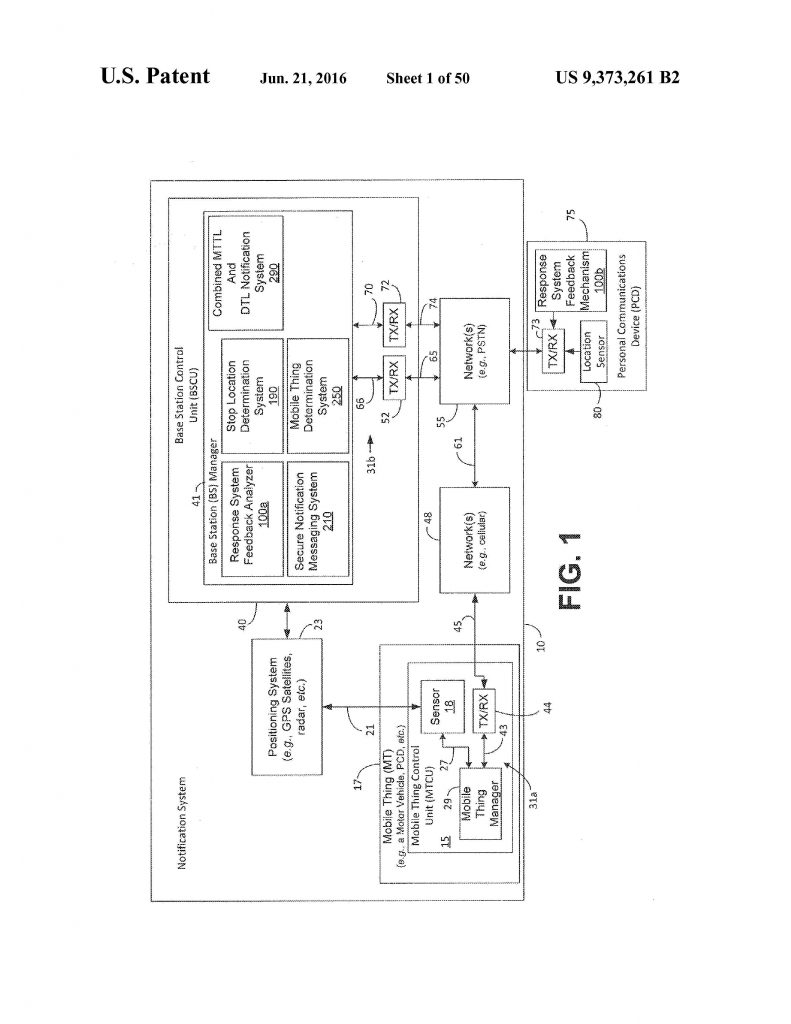ELECTRONIC COMMUNICATION TECHNOLOGIES V SHOPPERSCHOICE.COM, FEDERAL CIRCUIT 2020 (SOFTWARE PATENTS)
 Electronic Communication Technologies, LLC sued ShoppersChoice.com, LLC (“ShoppersChoice”), alleging that ShoppersChoice infringed claim 11 of U.S. Patent No. 9,373,261. The district court granted ShoppersChoice’s motion for judgment on the pleadings that claim 11 was invalid under 35 U.S.C. § 101.
Electronic Communication Technologies, LLC sued ShoppersChoice.com, LLC (“ShoppersChoice”), alleging that ShoppersChoice infringed claim 11 of U.S. Patent No. 9,373,261. The district court granted ShoppersChoice’s motion for judgment on the pleadings that claim 11 was invalid under 35 U.S.C. § 101.
The ’261 patent is titled “Secure Notification Messaging with User Option to Communicate with Delivery or Pickup Representative.” ’Claim 11 re-cites:
An automated notification system, comprising:
- one or more transceivers designed to communicate data; one or more memories;one or more processors; and
- computer program code stored in the one or more memories and executed by the one or more processors, the computer program code comprising:
- code that enables a first party associated with a personal communication device (PCD) to input or select authentication information for use in connection with a subsequent notification communication session involving advance notice of a delivery or pickup of a good or service at a stop location by a mobile thing (MT);
- code that causes storage of the authentication in-formation;
- code that monitors location or travel information in connection with the MT; code that causes initiation of the notification communication session to the PCD with the one or more transceivers, in advance of arrival of the MT at the stop location, based at least in part upon the location or travel information associated with the MT;
- code that, during the notification communication session, provides the authentication information to the PCD that indicates to the first party that the notification communication session was initiated by an authorized source; and
- code that, during the notification communication session, enables the first party to select whether or not to engage in a communication session with a second party having access to particulars of the pickup or delivery.
The Federal Circuit began their analysis with step one of the two-step framework. We agree with the district court that claim 11 of the ’261 patent is directed to the abstract idea of “providing advance notification of the pickup or delivery of a mobile thing.”
Monitoring the location of a mobile thing and notifying a party in advance of arrival of that mobile thing—amount to nothing more than the fundamental business practice of providing advance notification of the pickup or delivery of a mobile thing. As the district court correctly noted, “business practices designed to advise customers of the status of delivery of their goods have existed at least for several decades, if not longer.”
Although claim 11 also recites added measures that purport to increase security—namely, enabling a first party to input authentication information, storing the authentication information, and providing the authentication information along with the advance notice of arrival to help ensure the customer that the notice was initiated by an authorized source—those claimed functions are also abstract. As the patent specification explains, the “authentication information” can be essentially any information recognizable to the party being contacted, “for example but not limited to, any of the following: a logo, trademark, coat of arms, symbol, pre-defined symbol or text or numeric code that has been made or known to or selected by the party being contacted, specific sound or sounds or music, . . . a telephone number that can be called to verify the notification, . . . part of a credit card number, such as the last four digits, [or] an image of a signature, such as the signature of the notified party.” Businesses have long been supplying customers with order numbers and recording customer information.
The Federal Circuit stated that Claims, like claim 11, that are directed to longstanding commercial practices do not pass step one of the two-part § 101 test.
It can be seen that part of an Alice analysis is really a novelty analysis.
ECT argued that claim 11 is not directed to an abstract idea because it is “unique” in that it “is directed toward and addresses solutions to minimize hacker’s impacts when mimicking order conversations and shipment notification emails.” ECT’s argument failed. The Federal Circuit stated that they may assume that the techniques claimed are ‘groundbreaking, innovative, or even brilliant,’ but that is not enough for eligibility. They did not discuss why the reasoning of their previous BASCOM decision did not apply. In BASCOM, the claims recited an improvement to an existing solution. Decisions on patent-eligibility of software inventions can come down largely to which judges decide a case.